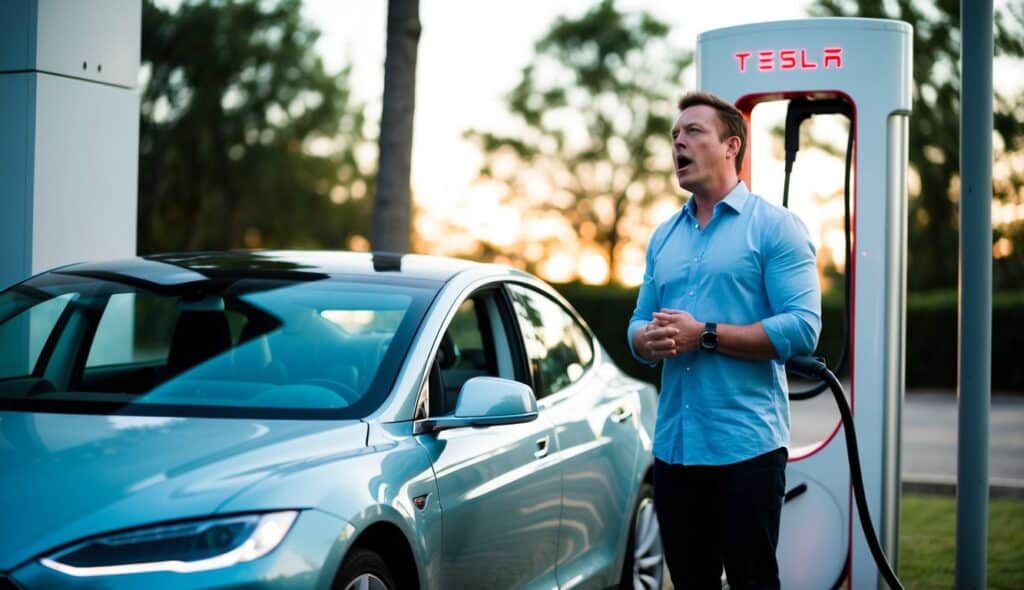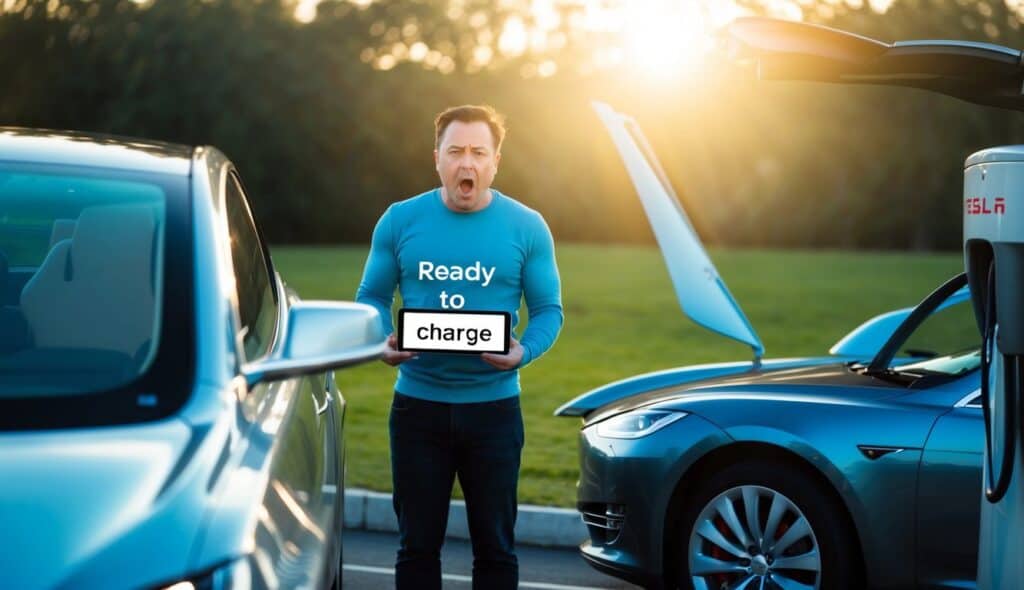As a Tesla owner, there’s nothing more frustrating than plugging in your car, seeing the “Ready to Charge” message, and then realizing that your vehicle isn’t actually charging. I’ve faced this issue myself, and after extensive research and troubleshooting, I’ve compiled a comprehensive guide to help you understand and resolve this problem.
Tesla Says “Ready to Charge” But Not Charging
When your Tesla displays “Ready to Charge” but doesn’t actually start charging, it indicates that the car recognizes the charging equipment, but there is a failure in initiating the charging process. This can be due to several reasons, ranging from simple software glitches to hardware issues. Here are some common causes and their solutions.

1. Faulty Charging Cable or Connector
One of the most straightforward issues to check is the condition of your charging cable and connector. Over time, these components can become damaged or worn out, which can lead to poor connectivity and charging issues.
Cause
The charging cable or connector might be damaged or worn out, leading to poor connectivity. This can happen due to regular wear and tear, exposure to extreme weather conditions, or physical damage from being stepped on or run over.
Solution
Inspect the charging cable and connector for any visible signs of damage. Look for frayed wires, cracks, or bends in the cable. Also, check the connector pins for any signs of corrosion or dirt. If you notice any wear and tear, consider replacing the cable.
Ensure that the connector is clean and free from debris. Sometimes, simply unplugging and replugging the cable can resolve the issue. If you have access to another Tesla charger, try using it to see if the problem persists.
Check out Tesla Model 3 Headliner Replacement
2. Charging Station Issues
Another common cause of charging problems can be the charging station itself. Whether you’re using a Tesla Supercharger, a public charging station, or a home charger, issues with the station can prevent your car from charging properly.
Cause
The problem might lie with the charging station. It could be a communication error between the station and your Tesla, or the station might be experiencing technical difficulties. Public charging stations, in particular, can sometimes be unreliable due to heavy usage and lack of maintenance.
Solution
Try using a different charging station. If you’re at a Supercharger, move to another stall. Superchargers are designed with multiple stalls, and sometimes switching to a different one can resolve the issue.
For home chargers, ensure that the charger is properly commissioned and updated. You can also reset the charger by unplugging it and plugging it back in. If the problem persists, you might need to contact the charging station provider for further assistance.
3. Software Glitches
Tesla vehicles are highly sophisticated and rely heavily on software for their operation. While this allows for a range of advanced features and regular updates, it can also lead to occasional software glitches that affect charging.
Cause
Software bugs can sometimes prevent the car from charging. Recent software updates, conflicts between different software components, or temporary system errors can cause these glitches.
Solution
Restart your Tesla’s software by performing a soft reboot. This can often resolve minor software issues. To do this, hold down both scroll wheels on the steering wheel until the screen goes black and the Tesla logo appears. This process takes a few minutes and can reset the car’s systems without affecting your settings or data.
Additionally, ensure that your Tesla’s software is up to date, as Tesla frequently releases updates that address known issues and improve overall performance.

4. Charging Port Issues
The charging port on your Tesla is another critical component that can sometimes cause charging problems. Issues with the port can range from simple obstructions to more serious malfunctions.
Cause
The charging port might malfunction or be obstructed. Dirt, debris, or moisture can get into the port and prevent proper contact between the car and the charger. Additionally, the port itself might be damaged due to wear and tear or improper handling.
Solution
Inspect the charging port for any debris or damage. Clean it gently if necessary using a soft cloth or compressed air. Be careful not to use any liquids or abrasive materials that could damage the port.
If the port appears damaged, you may need to have it serviced by Tesla. In some cases, a software update or a reset might also help resolve issues related to the charging port.
Check out How to Open a Tesla Door?
5. Electrical Circuit Problems
Sometimes, the issue might not be with your Tesla or the charging equipment but with the electrical circuit or outlet you’re using. Problems with the electrical supply can prevent your car from charging properly.
Cause
Issues with the electrical circuit or outlet can prevent the car from charging. This can include problems such as a tripped circuit breaker, a faulty outlet, or issues with the wiring in your home or the charging station.
Solution
Ensure that the outlet you’re using is functioning correctly. You might need to reset the circuit breaker. If you’re using a home charger, check that it is properly installed and that there are no issues with your home’s electrical system.
If you’re unsure, having a licensed electrician inspect your setup might be a good idea to ensure everything is in proper working order. For public charging stations, report any issues to the station provider so they can address the problem.
Additional Tips
Beyond addressing specific issues, several general tips can help you maintain your Tesla’s charging system and avoid problems in the future.
Keep Software Updated
Always ensure that your Tesla’s software is up to date. Tesla frequently releases updates that can fix bugs and improve charging performance. These updates are usually delivered over-the-air (OTA), and you can install them easily through the car’s interface. Regularly checking for updates and installing them promptly can help prevent many common issues.
Regular Maintenance
Regularly inspect your charging equipment and keep it in good condition. This includes both the home charger and any portable charging cables. Clean the connectors and ports regularly, and store cables properly to avoid damage. If you frequently use public chargers, take a moment to inspect the station before use to ensure it appears to be in good condition.
Tesla Support
If you’ve tried all the above solutions and your Tesla still won’t charge, don’t hesitate to contact Tesla support. They can provide further assistance and, if necessary, schedule a service appointment to diagnose and fix the issue. Tesla’s customer support is known for being responsive and helpful, so reaching out to them can save you a lot of time and frustration.
Conclusion
Experiencing charging issues with your Tesla can be inconvenient, but understanding the potential causes and solutions can help you quickly resolve the problem. By following the steps outlined above, you can ensure that your Tesla remains charged and ready to go whenever you need it.
You may also like:
- What Maintenance Does a Tesla Need?
- How Much Does It Cost for a Tesla Charging Station at Home?
- How to Lock a Tesla Model 3

Hi, I’m Marybeth, an electric car enthusiast living in New York in the USA. As the owner of electriccartalks.com, I love sharing my knowledge on EV tips, battery maintenance, and charging solutions. As a proud Tesla owner, I blend my personal experiences with professional insights to offer valuable information to fellow EV enthusiasts. Through my articles, I aim to empower others to make informed decisions about their electric vehicles. Read more